Kraków 2007-02-16
085c Section 1951-01-06
Jakowlew Jak-23
Poland
The second type of turbojet aircraft in the Polish Military Aviation. The first aircraft to achieve combat readiness. See Jak-17.
History
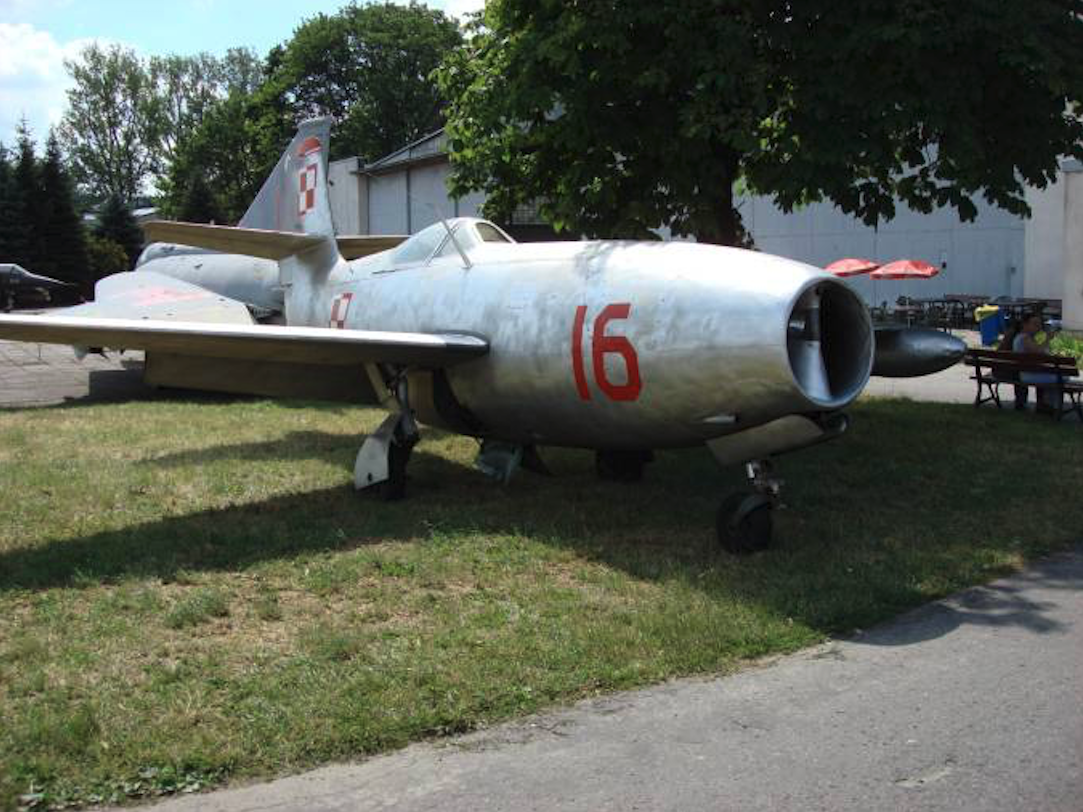
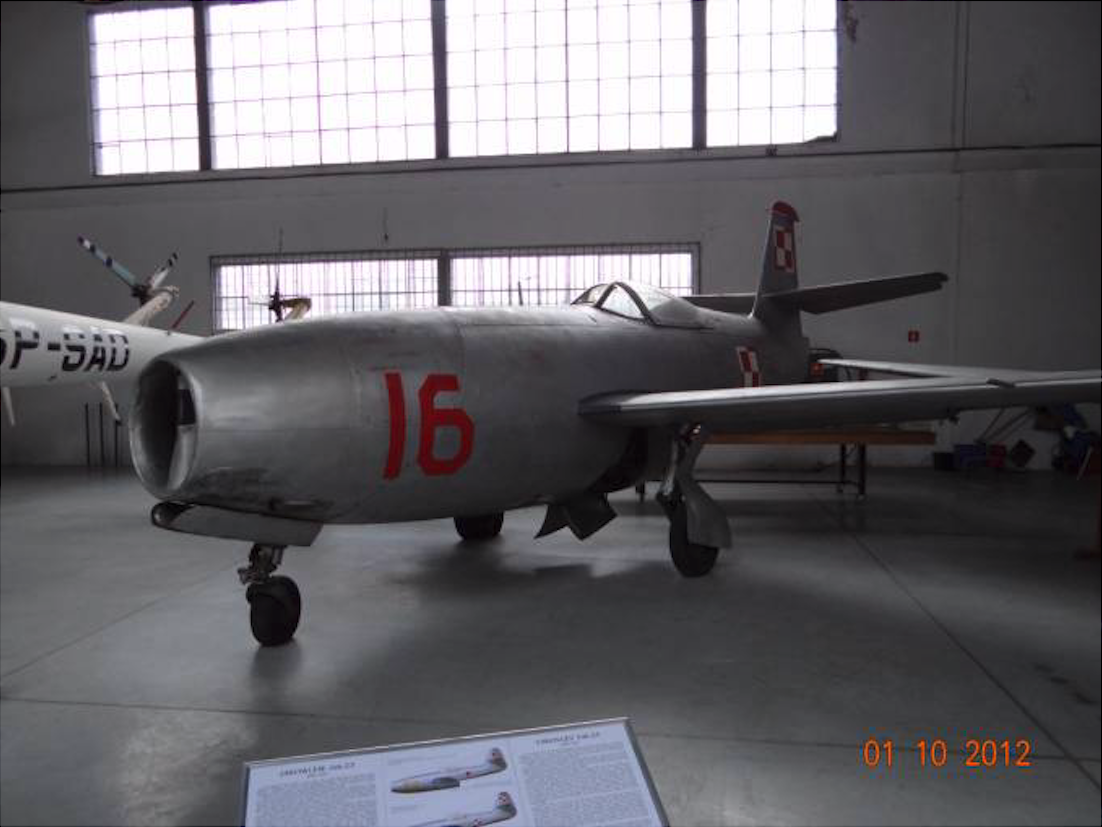
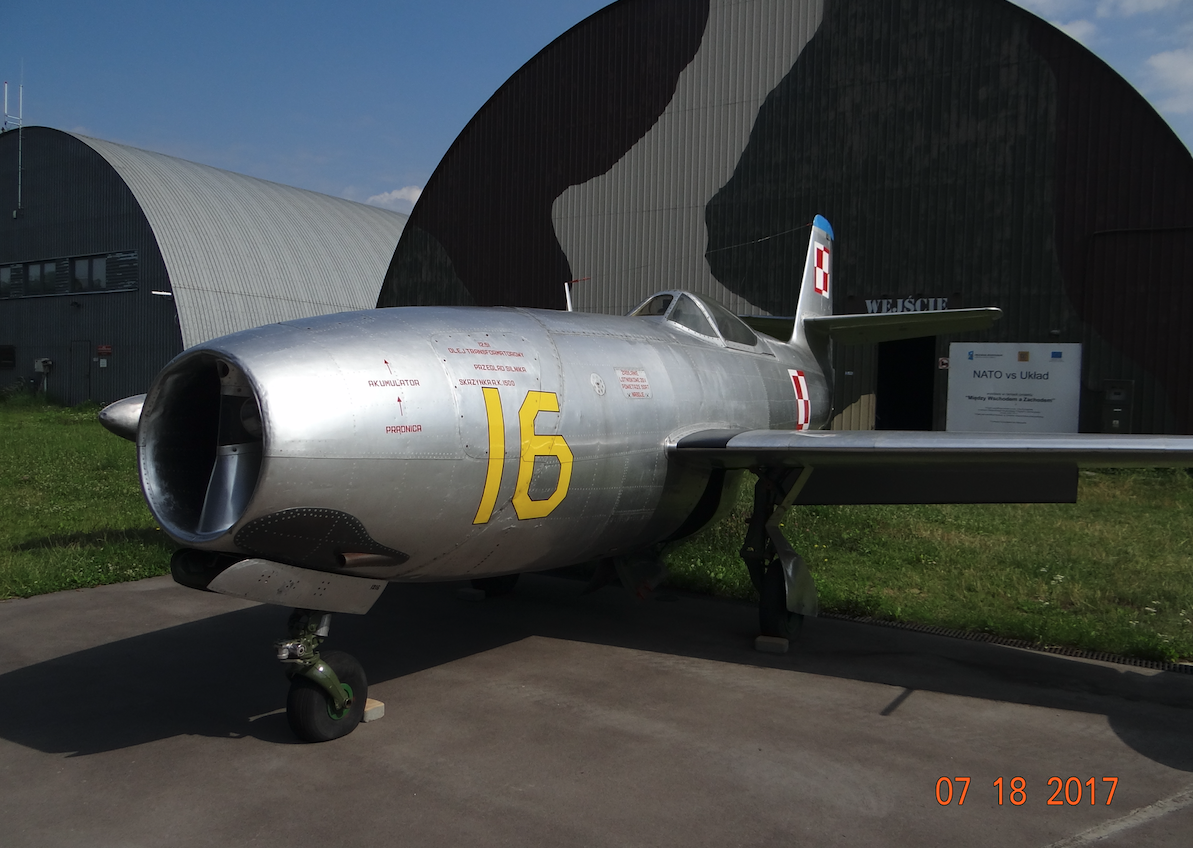
This is the same aircraft after renovation in 2017.
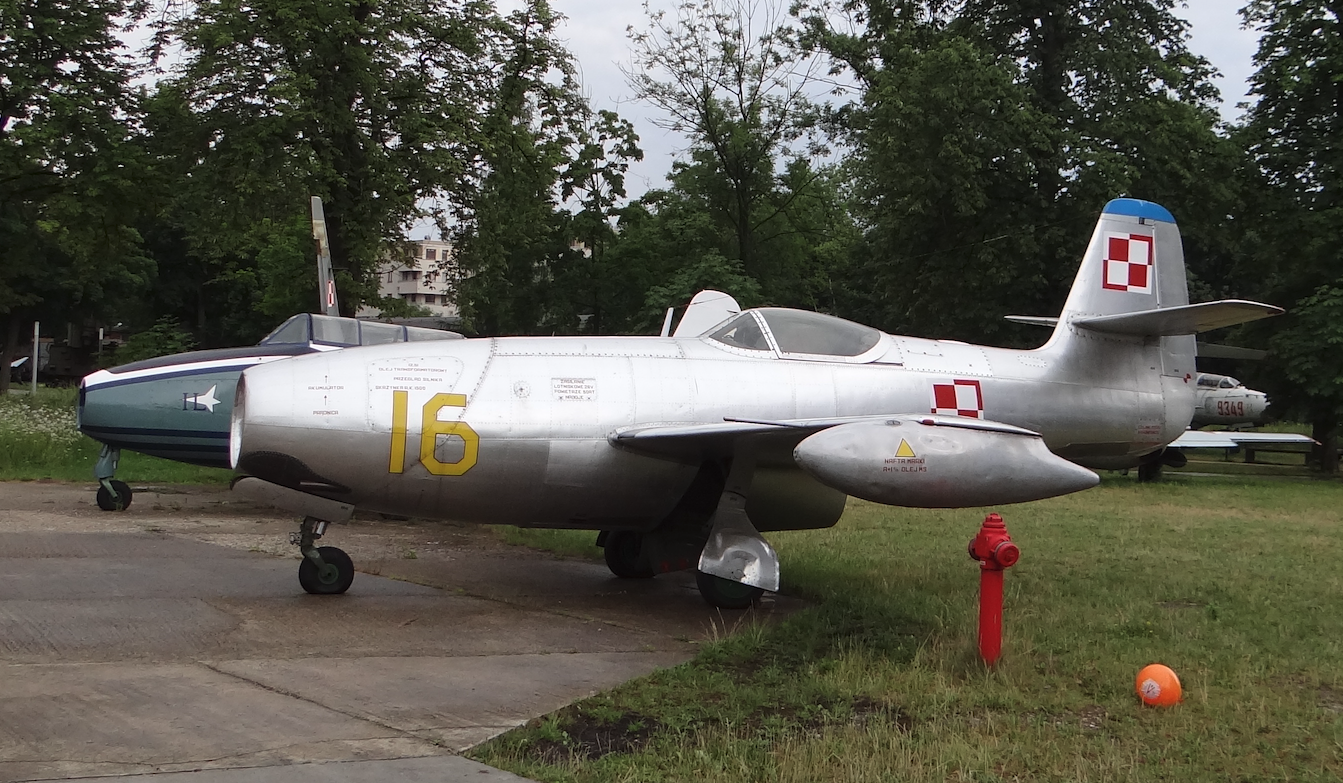


Jak-23 nb 1616. The side number is fictitious and is the number of the Military Unit at Balice Airport. There is red lightning on the hull, which means "Perfect Crew".
Assumptions of the Jak-23 aircraft structure.
The Jak-23 aircraft was constructed at OKB by Alexander Sergeyevich Yakoviev, as a consistent development of previous constructions; Jak-15 and Jak-17. However, the aircraft was built from the beginning as a turbojet aircraft, rather than adapting reciprocating airframes for new propulsion.
The Russians managed to obtain new turbojet engines in England. One of them was the Rolls-Royce Derwent V engine, whose production without a license was taken in CCCP under the designation RD-500. It is a turbojet engine equipped with a centrifugal compressor. Thanks to it, the engine is much more resistant to possible pumping and works more stable. The disadvantage of engines with centrifugal compressors is the larger diameter, and therefore the fuselage is more bulky and puts more resistance.
Jakovlev began work on the aircraft on his own initiative. Anyway, Stalin favored Yakovlev in front of other designers, which is why OKB Jakovlev's office enjoyed greater freedom, and thus access to finance. During the creation of Jak-23 OKB, Yakovlev simultaneously worked on several constructions; Jak-19, Jak-21, Jak-25
Although the overall redan structural system refers to Jak-15 and Jak-17, the new Jak-23 is already a modern half-shell structure. There is no welded steel pipe truss. For good access to the engine and other components, the front hull is removed.
Despite the engine with centrifugal compressor, the hull turned out to be quite slim. Five integral tanks with a capacity of 910 liters were placed in the fuselage. The fuel supply is supplemented with droplet shaped wing tanks with a capacity of 2 x 190 liters, practically not removed from the aircraft.
One-man airplane cabin covered with drip cover is not airtight. The cabin encapsulation was deliberately abandoned, as the aircraft was intended for operation at low and medium altitudes. Four 23 mm NR-23 cannons were provided as armament, with 60 bullets. The development of technical documentation and the project itself began at the end of 1946.
Prototypes and flight tests. 1947 year.
The prototype of the Jak-23 No. 1 aircraft made the first flight on June 14, 1947, although it can be found that this prototype was only completed on June 17, 1947, and the first flight was carried out on July 8, 1947. However, this is less likely. The first flight was made by senior flyers at OKB Yakovlev pilot M. I. Ivanov. In one test flight at low altitude, the aircraft reached a speed of 932 km / h. By August 12, 1947, the first series of tests were completed, after which the decision to send the aircraft to production was already made. Jak-19 and Jak-25 aircraft turned out to be worse.
The factory tests lasted until September 12, 1947. On that day, the minister of the aviation industry M. W. Chruniczew, officially asked the commander-in-chief of the air force K. A. Wierszynin to accept the Jak-23 aircraft for state tests.
State trials officially began on October 22, 1947, and were completed in March 1948. They were carried out mainly on the Jak-23-2 prototype. The aircraft received very good marks for maneuvering characteristics and take-off and landing properties, also from dirt runways. The disadvantages included longitudinal hull fluctuations in flight with a speed of Ma> 0.856. With a vigorous addition of gas, the plane ran upwards, which made it difficult to aim. And finally, the lack of aerodynamic brakes, which causes a longer deceleration. Ultimately, however, the aircraft was recommended for series production.
The Jak-23-2 prototype was lost on July 7, 1948, in unexplained circumstances, during the training flight preparatory to the air parade in Tuszyno. Pilot M. I. Ivanov was killed.
The third prototype Jak-23-3 was used for fatigue tests. A total of 5 prototypes were built. Prototype No. 5 has become a model for serial production.
Several corrections were made during the tests. Prototypes No. 1 and 2 had armament consisting of 4 plots, from prototype No. 3 their number was set at 2 23 mm cannons with a supply of 90 cartridges. The prototype No. 4 has been corrected to reduce rudder surface due to oversteer. The size of the heat-resistant sheet overlays at the outlets of the plots was also changed. Prototypes No. 4 and 5 received an antenna mast and sets of communication devices.
At the end of 1947, preparations began for large-scale production, which was launched in March 1948. However, the first aircraft left the assembly line of Plant No. 31 in Tyblisi in September / October 1949. This production delay of several months resulted from the delay of production of RD-500 engines, by 1 x 15.6 kN, with the simultaneous priority in their delivery for Ła-15 aircraft.
The Jak-23 aircraft was produced until the end of 1950. A total of 318 (310) machines were built, along with prototypes and a two-seater version.
Tests on the serial Jak-23. 1950 year.
One of the Jak-23 serial aircraft, in the period from January 1950 to March 1950, underwent state control tests in LII WWS (aviation institute of war-savage forces). In turn, from April 1950 to June 1950, another 20 machines were subjected to military tests in PLM (fighter regiment) in Grozny. The attempts were successful.
UTI Jak-23, Jak-23 K. 1949 year.
In 1949, a two-seater version was developed, designated UTI Jak-23. According to the training system of the time, the front seat was occupied by an instructor. The second student cabin was located at the back, almost at the end of the hull. The student's cabin was additionally equipped with a periscope. The cabin cover opened to the right. The armament was reduced to one 12.7 mm machine gun. The prototype was created from the reconstruction of the first Jak-23-1 prototype. Flight tests were carried out from March 1949 to September 1949, and the pilot was G. S. Klimuszkin.
However, the results were not satisfactory. The aircraft was rebuilt to the UTI Jak-23-II standard. The hull was extended by 0.21 m (0.20 m) and at the expense of the front fuel tank the cab was moved as far forward as possible. UTI Jak-23-II tests were carried out from September 1949 to December 1949, but the solution was considered incomplete.
Further changes were implemented through the development of UTI Jak-23-III. The aircraft underwent another processing. It consisted mainly in raising the seats, and thus the cabins up. Flight tests started but were not completed. This was due to the decision to terminate the production of the basic single-seater Jak-23. It also turned out that the training can be successfully conducted on Jak-17 UTI and MiG-15 UTI. According to some sources, several two-seater aircraft were built without a government order. After some modifications, they went to units as courier planes, hence the designation Jak-23 K.
Jak-23 in CCCP aviation and dependent countries.
At the turn of the 40/50 years, the political and military situation in the Korean Peninsula deteriorated, and on June 25, 1950, an outbreak of armed conflict that turned into a war began. Initially, this situation did not affect the development of Polish Military Aviation. But at the end of 1950, the Kremlin decided to rearm its dependent states. The result was the introduction of Jak-23 fighters.
The start of serial production of the Jak-23 coincided with the start of the production of the MiG-15, which is why the Jak-23 became a supplementary fighter and intended for export. CCCP units received their first aircraft at the turn of 1949/1950.
Already in 1949, the first Jak-23 aircraft received Czechoslovakia. Serial production was to be undertaken there, but this did not happen. The first batch consisted of 12 pieces, the second 9 pieces. They received the Czechoslovakian designation S-101. They were based, among others, in Cheb and Brno.
In Bulgaria, Jak-23 aircraft also appeared relatively early, in 1949. The first batch consisted of 9 pieces.
Romania received its first aircraft in 1951. In total, about 40 items were imported. In 1956, the aviation institute developed its own training and training version with a two-person cabin. The prototype received the designation Jak-23 DC (doubla camanda - two-man crew). The second cabin was located behind the previous one. The remaining distance between the cabin and the tail was profiled with a fairing. Pilots also took seats in cabins differently than in the Soviet version of the Jak-23 UTI. A student sat first. The hull length has not changed. The plane was unarmed.
The Jak-23 aircraft also found their way to Hungary and Albania. Several copies from Poland were sent to Albania. In both countries, this type of fighter has been used since 1951, but no further data is available.
When the Jak-23 aircraft in boxes, they traveled by rail from CCCP to Albania, they crossed the territory of Yugoslavia. At that time, Yugoslavia secretly handed over one Jak-23 aircraft to the USA for testing. Everything took place secretly in one week, and the plane was delivered to the recipient.
War in Korea - according to several accounts of American pilots on the opponent's side, aircraft similar to Jak-23 were seen in the air several times, but there is no further information on this subject.
Jak-23 in Poland. 1950 year.
The Jak-23 is the aircraft that opened the era of jet aircraft in Polish aviation. The aircraft was free from defects of its predecessor (Yak-17) and was a more mature construction. But in these years, the progress in the field of power trains and aerodynamics was so great that the career of this design can not be talked about. In dawn aviation it was only an episode. However, not for the Polish Air Force.
The first copies arrived in Poland in December 1950, i.e. relatively much later than in allied countries. According to the plan on 6.01.1951, the first transport was placed on the railway siding of Bemowo-Warsaw airport. There were several dozen boxes on the platforms. The load was placed in hangar No. 3. The building was additionally fenced and guarded. One crate housed one complete plane, unfolded.
Aircraft were assembled by Soviet and Polish mechanics and pilots. The Russians carried out flights and trained Polish pilots. In February 1951, more Jak-23 units were assembled, flew and prepared for delivery to 1 MPL (fighter flight regiment).
In September 1951, 1 MPL, as the first unit equipped with Jak-23 fighter aircraft, obtained combat readiness. As a result, the Jak-23 became the first commercial turbojet aircraft in Poland.
First pilots of Polish Jak-23 aircraft.
Following the new planes, four pilots trained in CCCP arrived at the Bemowo-Warsaw airport to the 1st Fighter Regiment. They were instructor pilots; Sapiecha, Łochow, Mareszkin, Wołkowski. The task of the arrived instructors was to train the first Polish pilots who had already undergone training on jet jets (aircraft), which in turn were to create a team of future instructors.
Because it was realized that there would be too few pilots, that's why in February 1951, a second group of pilots and technicians was selected for training on training Jak-17 W in Soviet 156 PLM in Brzeg Opolski in Poland. The group consisted of 12 (15) pilots and several technicians. They were among them; Lt. Cpt. Wasyl Gaszyn, Cpt Stanisław Więcek, Cpt M. Bajczykow, Cpt Tadeusz Krępski, Cpt Eugeniusz Pniewski, Cpt Stanisław Tanana, Lt. Wiktor Iwoń, Lt. Bolesław Smolik, Lt. Andrzej Dobrzaniecki, Lt. Cpt. Stefan Płoszański, Lt. Władysław Hermasz (brother of the Polish astronaut), Capt. Mieczysław Goworek.
The pilots were initially trained on the Jak-17 W (UTI) and performed about 15 flights, for a total of about three hours. Then they switched to Jak-23 and raided them for about 7 hours. In April 1951, they returned to Bemowo airport, with the privileges of instructors.
Written by Karol Placha Hetman
Kraków 2007-02-16
085c Section 1951-01-06
Jakowlew Jak-23
Poland
Construction Jak-23
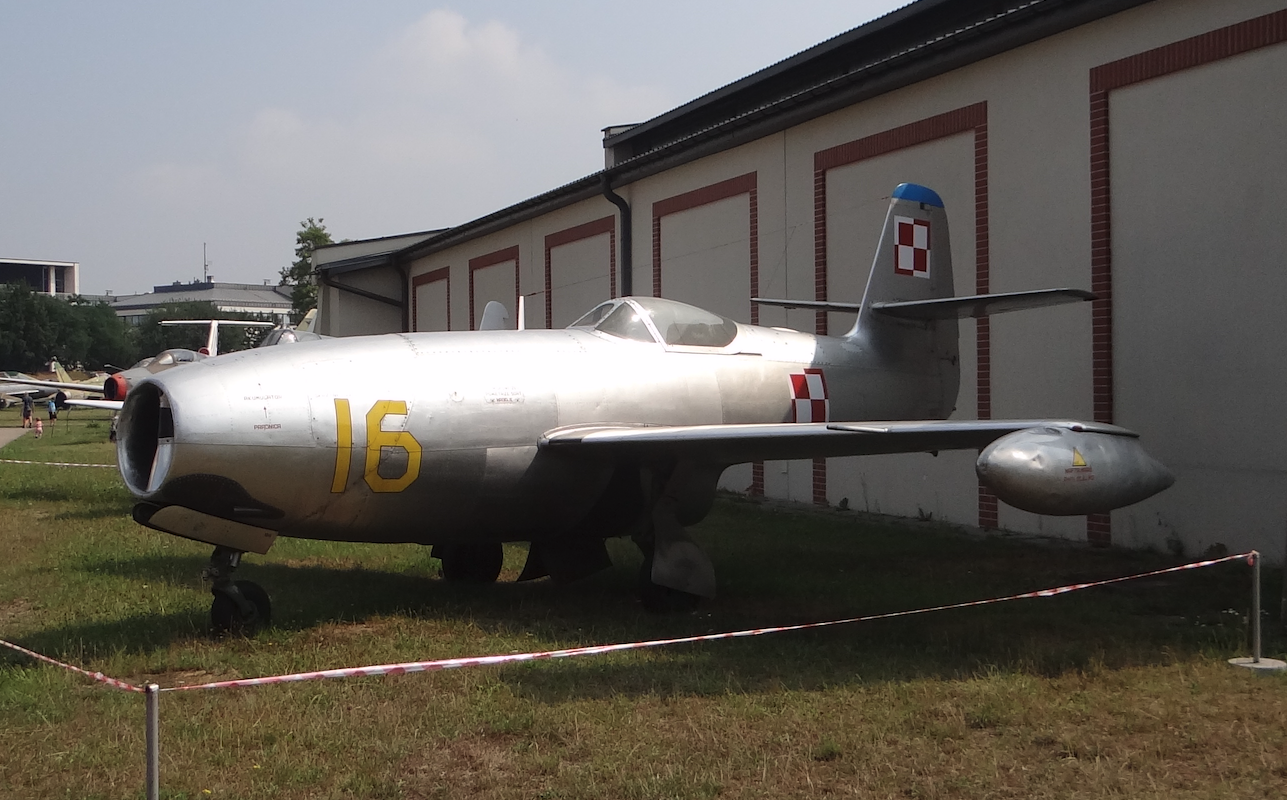
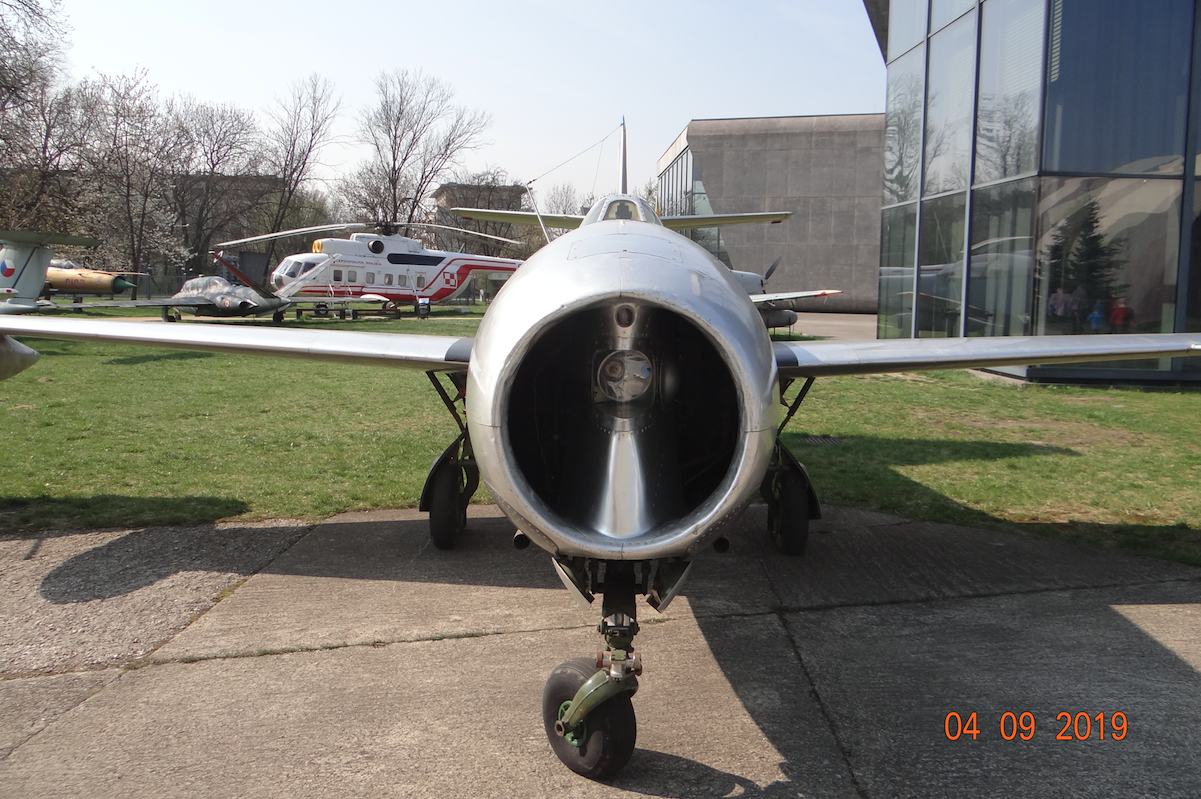
The Jak-23 is a single-seat, single-engine fighter aircraft built in a redane system with a simple lobe. Half-shell construction.
Simple, non-split lobe. At the hull laminar profile S-1-12 transforming into laminar KW-Z-12. Take 3.5 degrees. Each wing was built of 2 girders and 17 ribs. The covering is made of D16ATW dural sheets from 1.2 mm to 1.8 mm thick, riveted. The panel was equipped with ailerons with an area of 0.68 m2 and flaps with an area of 1.603 m2. The flaps were tilted to take off 25 degrees and 60 degrees for landing.
Redan fuselage. The front part is subtracted to allow access to the engine and other equipment. The hull covering was made mainly of D16ATWŁ dural sheets from 0.8 mm to 1.8 mm thick. In places exposed to high temperature, the cover was reinforced with 1.5 mm thick ZOHGSAŁ steel overlays. The cabin protrudes from the hull outline. The cabin glazing consists of a permanent windscreen with three windows, front made of armored glass and a movable one-piece fairing retracted back. The cabin equipment deserves attention ASP-3N (semi-automatic gyro optical sight), used for the first time on a serial CCCP aircraft. The second new feature was the lightweight thrown-out pilot's seat.
Classic set with division into rudder and ballast. The vertical stabilizer has an area of 1.0955 m2 and a rudder of 0.5115 m2 and tilts 30 degrees left and right. The rudders with the balancing flap are 33 degrees up and 25 degrees down.
Three-support chassis with front wheel. The chassis base is 2.697 m, the main chassis spacing is 2.100 m. The dimensions of the front wheel are 400 x 150 mm, the main wheel 570 x 140 mm. Front retractable into the fuselage backwards. Main in wings and fuselage. To signal the exposure of the chassis, lamps in the cabin and so-called soldiers on the wing were used.
Engine Jak-23.
The drive is an RD-500 engine with 1 x 1,590 daN thrust. Maximum diameter 1 090 mm, length 2 060 mm, dry weight 581 kg, rotation speed 245 rpm. The fuel is in 5 hull tanks; front 361 liters, side left 113 liters, right side 111 liters, outgoing 30 liters and rear 295 liters. Two suspended tanks 2 x 190 liters. A total of 1 290 liters.
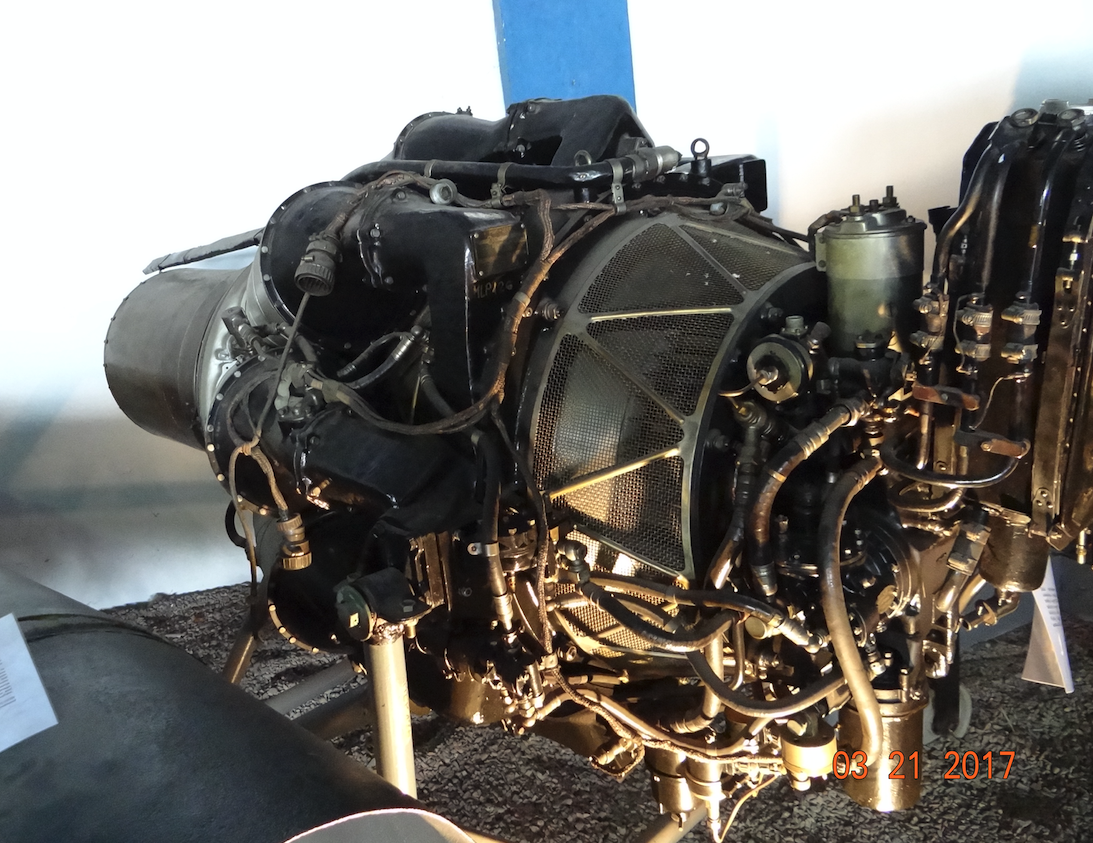
Equipment
Additional equipment consisted of the RSI-6M-1 radio and RPKO-10M radio half-compass.
Armament
The armament of the aircraft was two 23 mm Nudelman-Suranow NS-23 or 150 P cannons built in the front of the fuselage, under the engine air intake. In addition, the plane could take two 60 kg bombs. In the partition of the inlet tunnel or on the outskirts of the air intake was mounted the S-13 photocarabine.
Data T-T Jak – 23.
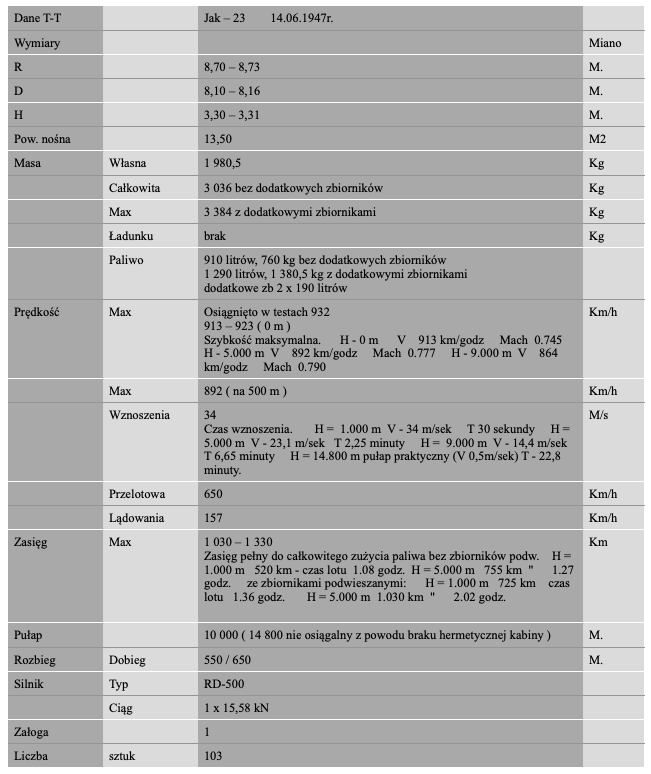
Written by Karol Placha Hetman
Kraków 2007-02-16
085c Section 1951-01-06
Jakowlew Jak-23
Poland
Tally of Jak-23 aircraft operated in Poland.
An indicative list of Jak-23 aircraft used in Poland.
1 712/37 1951. 40 PLM. On August 25, 1952 chor pilot Kazimierz Jaworski was given the task of flying to the pilot zone. It was his first solo flight and he was supervised by leek Pietrzak. He gained 6,000 m in the zone and was about to start the task. The plane turned left while tilting and began to descend abruptly to dive to 600. Seeing a dangerous situation, leek Pietrzak ordered Jaworski to take the plane out of the dive, but there was no reaction. A moment later, the plane crashed into the ground, exploding near Kroszyce Stare near Mierzęcin. The pilot was killed on the spot. The likely cause of the disaster was loss of consciousness by the pilot.
2 713/38 1951. 1 PLM. On August 9, 1951. submitted to 13 PLM. In 1952 in stock 39 PLM Mierzecice
3 714/39
4 715/40 1951. 1 PLM. On August 9, 1951. submitted to 13 PLM. In 1952 in stock 39 PLM Mierzecice
5,718/45 1951. 1 PLM. On August 9, 1951. submitted to 13 PLM. In 1952 in stock 39 PLM Mierzecice
6 722 / ... 29 PLM. The aircraft was transferred to 26 PLM
7,723 / 48 1951. 1 PLM. On August 9, 1951. submitted to 13 PLM. In 1952 in stock 39 PLM Mierzecice
8 724/49 1951. 1 PLM. On August 9, 1951. submitted to 13 PLM. In 1952 in stock 39 PLM Mierzecice
9 725/50 1951. 1 PLM. On August 9, 1951. submitted to 13 PLM. In 1952 in stock 39 PLM Mierzecice
10 801/01 1951. 1 PLM. On August 9, 1951. submitted to 13 PLM. Then transferred to 39 PLM in Mierzęcice. In January 1952. As a result of engine stalling, pilot Lt. Rutkowski landed in an accidental place, completely destroying the machine. The pilot was only slightly injured.
11 802/02
12 803/03
13 804/04
14 805/05
15 806/06
16 807/07
17 808/08
18 809/09 1951. 2 PLM Krakow.
19 810/10 1 PLM. The specimen on which Mirosław Hermaszewski, the first Polish astronaut, flew. On August 9, 1951. submitted to 13 PLM. In 1952 in stock 39 PLM in Mierzęcice
20 813/13 1951. On June 22, 1951. the first accident of the Yak-23 aircraft No. 813 occurred. During the training flight in the aircraft piloted by ensign pilot Feliks Nadowski, the engine went out. The aviator decided to make an emergency landing with the landing gear retracted in a contingent area. After landing the pilot from the cabin pulled people working in the field. The pilot suffered a slight spinal injury and the plane was repaired.
21 815/15 39 PLM at the beginning of July 1952. during take-off due to a rupture of the front wheel tire, the aircraft snapped. Arkadiusz Kurzawa's pilot was injured.
22 819/19 1951. 1 PLM. On August 9, 1951. submitted to 13 PLM.
23 820/20 1951. 1 PLM. On August 9, 1951. submitted to 13 PLM. In 1952 in stock 39 PLM Mierzecice
24 905/30 1951. 1 PLM. On August 9, 1951. submitted to 13 PLM. In 1952 in stock 39 PLM Mierzecice
25 909 / ... 1951. 1 PLM. On August 9, 1951. submitted to 13 PLM.
26 No. 925 SP-GLK The first of those submitted to the Institute of Aviation
27 SP-GLL First handed over to the Institute of Aviation. It was a spare part.
28 1001 / ... 29 PLM. Aircraft transferred to 26 PLM
29 1002/02 1951. 1 PLM. On August 9, 1951. submitted to 13 PLM. In 1952 in stock 39 PLM Mierzecice
30 1004 / ... 29 PLM. Aircraft transferred to 26 PLM
31 1006 / ... 29 PLM. Aircraft transferred to 26 PLM
32 1007 / ... 29 PLM. Aircraft transferred to 26 PLM
33 1008 / ... 29 PLM. Aircraft transferred to 26 PLM
34 1009 / ... 29 PLM. Aircraft transferred to 26 PLM
35 1012 / ... 29 PLM. Aircraft transferred to 26 PLM
36 1013 / ... 29 PLM. Aircraft transferred to 26 PLM
37 1017 / ... 29 PLM. Aircraft transferred to 26 PLM
38 1019/19 29 PLM Air accident - A car was sent on the runway to tow away a plane that rolled out of the runway and got stuck. At that time, the plane Yak-23 No. 1019/19 landed on sick Henryk Gudajdys and finally collided with the car.
39 1022/22 In 1952. in stock 39 PLM Mierzecice
40 1106/31 in 1952. in stock 39 PLM Mierzecice
41 1117/42 1951. 1 PLM. On September 6, 1951. submitted to 13 PLM. In 1952 in stock 39 PLM Mierzecice
42 1119/44 1951. 1 PLM. On September 6, 1951. submitted to 13 PLM. In 1952 in stock 39 PLM Mierzecice
43 1120/55 1951. 1 PLM. On September 6, 1951. submitted to 13 PLM. In 1952 in stock 39 PLM Mierzecice
44 1122/47 1951. 1 PLM. On September 6, 1951. submitted to 13 PLM. In 1952 in stock 39 PLM Mierzecice
45 1123 / ... 1951. 1 PLM. On September 6, 1951. submitted to 13 PLM.
46 1125/148 in 1952. in stock 39 PLM Mierzecice
47 1205/05 1951. 1 PLM. On September 6, 1951. submitted to 13 PLM. In 1952 in stock 39 PLM Mierzecice
48 1211 / ... 29 PLM. Aircraft transferred to 26 PLM
49 1216/16 1951. 1 PLM. On September 6, 1951. submitted to 13 PLM. In 1952 in stock 39 PLM Mierzecice. After leaving the service, he went to the Aviation Museum in Czyżyny.
50 Nb 1616 A copy placed as a monument in Bielany in Kraków. The side number is JW
51 Nb 1957 A copy placed as a monument in Zakopane. The side number is one year.
52 Nb 11
53 Nb 12
54 Nb 17
55 Nb 21
56 Nb 23
57 Nb 087
58 Nb 010
59 Nb 121
60 ... / 144
There were 103 Jak-23 aircraft in the Polish Army.
Written by Karol Placha Hetman
